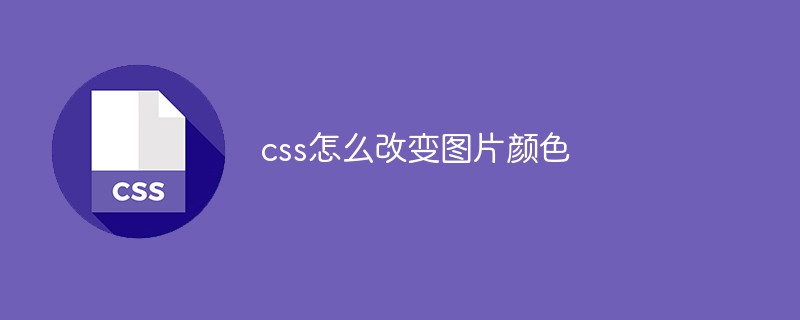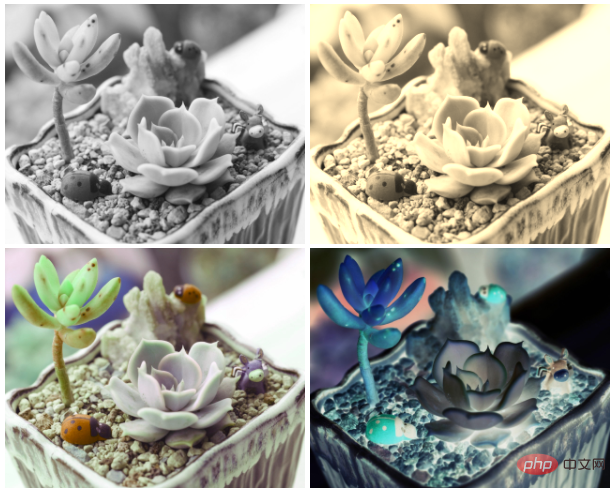
In CSS, you can use the filter attribute to change the color of the picture. For example: use "filter:grayscale(%);" to set the picture to black and white, "filter: sepia(%);" to set the picture to Sepia images etc. The filter property of CSS is mainly used to set the visual effects of images.

The operating environment of this tutorial: Windows 7 system, CSS3&&HTML5 version, Dell G3 computer.
You can use the filter attribute in CSS to apply a Photoshop-like filter effect to the image to change the color of the image.
<!DOCTYPE HTML>
<html>
<head>
<meta charset="UTF-8">
<style type="text/css">
img{
width: 300px;
}
.img1{
/*元素的灰度*/
/*考虑浏览器兼容性:兼容Chrome,Safari,Opera*/
-webkit-filter: grayscale(100%);
filter: grayscale(100%);
}
.img2{
/*将图像转换为棕褐色图像*/
/*考虑浏览器兼容性:兼容Chrome,Safari,Opera*/
-webkit-filter: sepia(100%);
filter: sepia(100%);
}
.img3{
/*色调旋转*/
/*考虑浏览器兼容性:兼容Chrome,Safari,Opera*/
-webkit-filter:hue-rotate(55deg);
filter: hue-rotate(55deg);
}
.img4{
/*反转元素*/
/*考虑浏览器兼容性:兼容Chrome,Safari,Opera*/
-webkit-filter: invert(100%);
filter: invert(100%);
}
</style>
</head>
<body>
<div class="demo">
<img class="img1 lazy" src="/static/imghw/default1.png" data-src="img/1.jpg" / alt="How to change image color with css" >
<img class="img2 lazy" src="/static/imghw/default1.png" data-src="img/1.jpg" / alt="How to change image color with css" >
<img class="img3 lazy" src="/static/imghw/default1.png" data-src="img/1.jpg" / alt="How to change image color with css" >
<img class="img4 lazy" src="/static/imghw/default1.png" data-src="img/1.jpg" / alt="How to change image color with css" >
</div>
</body>
</html>Original picture:


CSS video tutorial、html video tutorial】
CSS filter attribute
The filter attribute of CSS is mainly used to set the image Visual effect. Syntax:filter: none|blur()|brightness()|contrast()|drop-shadow()|grayscale()|hue-rotate()|invert()|opacity()|saturate()|sepia()|url();
Programming Video! !
The above is the detailed content of How to change image color with css. For more information, please follow other related articles on the PHP Chinese website!